1. Music and Mood.
What is the mechanism by which music can affect our moods? We begin this course with an experiment, listening to a
short piece of music in four distinct movements and discussing our reactions to each of them in turn. Many of the
topics raised will crop up later in the course, but for now, in the second hour of the class, we focus on the sense
of aspiration that many people hear in the opening movement.
Music has the power to circumvent our conscious minds and bring us a sense of order, radiance, or joy. It has long
held a place in religious worship, yet spirituality in music can take many different forms, and may not even be
attached to specific religious doctrine. Our second hour will thus be devoted to ecstatic experiences of all kinds,
and in many different contexts. rb.
The script, videos, and images will be posted immediately after class.
VIDEO LINKS
This week, everything shown in class is available on YouTube, plus much else besides—though this will not always be so.
The links to the Rossini overture with which we began and all the sacred/secular clips from the second hour of the class
are given below just as I showed them. However, the list includes many more items related to the different
sections of the Rossini than I managed to show; see below for further explanation. *Asterisks
indicate clips not played in class. rb.
•
For the famous fourth movement, I include the André Rieu performance with the audience reaction, and the Lone
Ranger references that we actually saw. Selecting from the host of borrowings and parodies out there, I include links
to a Bugs Bunny cartoon and its moral opposite from A Clockwork Orange, where Stanley Kubrick uses the music
to underscore wanton violence. I round out the picture with the now-traditional use of the music by the IU Hoosiers'
basketball team to accompany a final-inning time-out, and a very funny video by a high-school band in which all the
instrumental parts are sung.
•
The ranz des vaches, or call to the cows, in the third movement is used in numerous cartoons; I link to the
earliest and still the funniest of them, a black-and-white cartoon by Marv Newland. As I did in class, I show two versions
of the other traditional Swiss melody in the opera, both as a standalone item and in the operatic context of being used
as an intrument of oppression. I also include a version of this scene from a more recent production. For some reason, the
Swiss tune was adopted by Scottish bagpipe bands as "The Green hills of Tyrol," and singer Andy Stewart later turned this
into a song, "The Scottish Soldier," which became very popular. I include it as a possible explanation for why the tune
seems so familiar, although Stewart's version is a far cry from Rossini's original!
•
The second movement is a storm. I put it into context with a few other storms (Vivaldi and Beethoven) as well as the
operatic storms by Rossini himself and Wagner that I played in class. For the Wagner example, I added a clip of the orchestra
in the pit of La Scala for the intensity conveyed by the conductor, Daniel Barenboim.
•
The connections I made in class to the first movement were entirely tangential, as they consisted only of other works
with prominent cellos. To the Villa-Lobos and Beatles examples, I have added a Suppé overture that, like Rossini's, features
a solo cello near the beginning, and the beautiful 13th variation from Elgar's Enigma Variations dedicated to a
friend who was a professional cellist.
I added one item marked RELATED TO BOTH HOURS: the "Qui tollis" movement from Haydn's Mass in Time of War. I
considered using it to end the first hour, because it also has a prominent cello part, played onstage. I considered using
it at the start of the second hour, because it is a sacred subject treated in an entirely non-liturgical way. But I
eventually decided that its frame of reference was too complex and its content too dense to be handled in a brief discussion.
It comes from a staging of the Haydn mass at the Amsterdam Opera by Peruvian-Dutch director Lisenka Heijboer Castañon. The
text is roughly, "Thou that bearest the sins of the world, have mercy on us." But any Christian references are oblique, and
there is a lot there that is secular in nature. Unpack it if you can. But even if you can't, enjoy the beautiful singing of
baritone Johannes Kammler, and the playing by that unnamed cellist!
| WILLIAM TELL OVERTURE |
| |
Original scoring |
|
* Shanghai Symphony
(Daniel Harding)
|
| |
Arranged for 7 cellos |
|
* Chicago Lyric Opera
(arr. Blaise Déjardin)
|
| |
| CLIPS RELATED TO INDIVIDUAL MOVEMENTS |
| |
Movement 4: Allegro vivace |
|
* André Rieu in Tuscany
* Lone Ranger credits
* Bugs Bunny cartoon
* A Clockwork Orange
(warning: violence!)
* IU Hoosiers time-out
* Timpanogos HS Choir
(very funny!)
|
| |
Movement 3: Andante |
|
* Bambi Meets Godzilla
(cartoon by Marv Newland)
* Swiss dance as separate item
(Vail Dance Fstival)
* Swiss dance in the opera
(Alessandra Ferri, Pesaro 1995)
* Swiss dance in the opera
(extended sequence, Pesaro 2013)
* The Scottish Soldier
(song by Andy Stewart)
|
| |
Movement 2: Allegro |
|
* Vivaldi: The Four Seasons
(Trondheim Soloists)
* Beethoven: Pastoral Symphony
(Rotterdam Symphony)
* Rossini: The Barber of Seville
(Met 2025)
* Wagner: Die Walküre
(Met 2011)
* — the same, orchestra only
(Daniel Barenboim, La Scala)
|
| |
Movement 1: Andante |
|
* Villa-Lobos: Bachianas Basileiras #5
(Babara Hannigan, Göteborg)
* Lennon/McCartney: "She's leaving home"
(audio only)
* Suppé: Poet and Peasant overture
* Elgar: Enigma Variations, XIII
|
| |
| RELATED TO BOTH HOURS |
| |
Haydn: Missa in Tempore Belli |
|
* Qui tollis peccata
(see full description above)
|
| |
| SACRED AND SECULAR |
| |
Stölzel: "Bist du bei mir" |
|
* Benjamin Appl recording session
|
| |
Rossini: Stabat Mater |
|
* Cuius animam gementem
(Franco Bonisolli, audio only)
* Complete, cued to the above
(Matthew Polenzani)
|
| |
Raffaella Aleotti |
|
* Ego flos campi
(Marian Ensemble)
|
| |
David Lang |
|
* I want to live where you live
(Trio Medieval)
|
| |
| THE JEWISH TRADITION |
| |
Reich: Tehilim |
|
* Opening
(Colin Currie Group)
|
| |
Golijov: Isaac the Blind |
|
* Complete, cued to excerpt heard in class
(Stift Festival, Weerselo)
|
| |
Bock: Fiddler on the Roof |
|
* Wedding dance
(1971 film)
|
| |
|
|
|
|
|
| IMAGES |
The thumbnails below cover the slides shown in class, though
there may be a few small discrepancies. Click the thumbnail to see a larger image.
Click on the right
or left of the larger picture to go forward or back, or outside it to close. |
 | |
 | |
 | |
 | |
 | |
 | |
 | |
 | |
 | |
 | |
 | |
 | |
 | |
 | |
 | |
 | |
 | |
 | |
Here are brief bios of the composers and writers considered in the class, listed in order of birth.
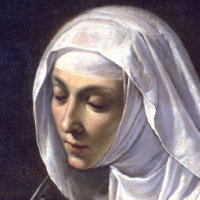 |
Raffaella Aleotti, 1570–1646. Italian composer.
Raffaella Aleotti showed a precocious musical talent, and her teacher suggested she enter the convent of San Vito in Ferrara to further her skills. She published a number of sacred text settings. She may have been either the sister or indeed the same person as Vittoria Aleotta, a nun who also published sacred settings around the same time. The image, which has been used on CD covers, is almost certainly not her portrait.
|
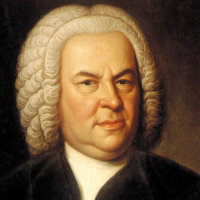 |
Johann Sebastian Bach, 1685–1750. German composer.
The towering genius of German music in the earlier 18th century, Bach was most famous in his time as an organist and choirmaster, most notably at the Thomaskirche in Leipzig. His work includes two Passions, numerous cantatas, and keyboard and orchestral works that codify and extend the possibilities of counterpoint in his time.
|
 |
Gottfried Heinrich Stölzel, 1690–1749. German composer.
Dissuaded from the music profession by his father, Stölzel originally studied theology, but his musical urge became too strong to resist. He learned by serving as copyist to a Leipzig composer, who first perfomed his compositions as his own. Later, in his own right, he held appointments in Breslau, Halle, Bayreuth, and Gotha, writing several operas, oratorios, masses and instrumental compositions. He is best known for the song "Bist du bei mir," for a long time attributed to Bach.
|
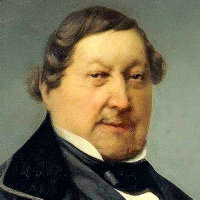 |
Gioacchino Rossini, 1792–1868. Italian composer.
Rossini's fame rests on his 39 operas, especially the comedies, all written while he was still in his thirties. In 1829, fter writing Guillaume Tell, one of the foundation stones of French grand opéra, he essentially retired, settling in Paris, and writing only occasional pieces plus his masterpieces of sacred music, the Stabat Mater of 1842 and Petite Messe solennelle of 1864.
|
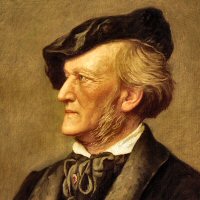 |
Richard Wagner, 1813–83. German opera composer.
Wagner almost single-handedly transformed the nature not only of opera but also of harmony and orchestration. His 10 mature operas include Tristan und Isolde (1865), Die Meistersinger von Nürnberg (1868), and the vast tetralogy Der Ring des Nibelungen (completed 1876), for which he had a special theater built at Bayreuth. His final opera, Parsifal (1882), was written for exclusive performance at that theater.
|
 |
Heitor Villa-Lobos, 1887–1959. Brazilian composer.
Villa-Lobos studied the cello with his father and made an early living playing in orchestras, but as a composer he was largely self-taught. Visiting Paris in 1927–30, he picked up the prevailing neo-classicism, and returned to Brasil to write a series of pieces called Bachianas Brasilieras infusing baroque forms with Brazilian folk styles.
|
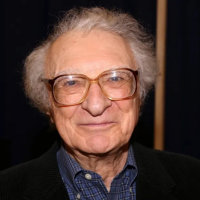 |
Sheldon Harnick, 1924–2023. American lyricist.
Although Harnick earned a degree in music from Northwestern, his greatest contribution was as a lyricist, especially in partnership with Jerry Bock, producing the successes Fiorello! (1959) and Fiddler on the Roof (1964), and several others.
|
 |
Jerry Bock, 1928–2010. American composer.
Bock began writing musicals while a student at the University of Wisconsin. His partnership with lyricist Sheldon Harnick produced the successes Fiorello! (1959) and Fiddler on the Roof (1964), among several others.
|
 |
Steve Reich, 1936– . American composer.
Reich's contribution to the minimalist movement was through his concept of "phase shifting," simple patterns which change perceptibly as one listens. His Music for 18 Musicians (1976) and Tehillim (1981) have become minimalist icons. His Different Trains (1988) for taped voices and string quartet, is a striking musical memorial to victims of the Holocaust.
|
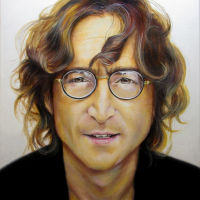 |
John Lennon, 1940–80. English singer-songwriter.
Born in Liverpool, Lennon is best known as co-founder of the Beatles in 1960 and, with Paul McCartney, one half of a songwriting partnership considered the most successful in history. His increasing drug use and preoccupation with multi-media artist Yoko Ono (whom he married in 1968) may have been a factor of the breakup of the band in 1969. In his last years, he became very active in anti-war protests, living in NYC, where he was murdered in 1980.
|
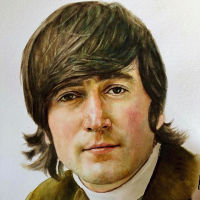 |
Paul McCartney, 1942– . English singer-songwriter.
Paul McCartney was a bass-guitarist, pianist, lead singer and songwriter with The Beatles, which he founded with John Lennon in 1960; his songwriting partnership with Lennon was the most successful in history. Although the son of a jazz musician, he was largely self-taught, but his natural musicianship, perfect pitch, and taste for exploration soon made him the group's de facto artistic leader, and the one most responsible for its artistic innovations. He issued his first solo album in 1970, about the time the band broke up, and later founded his own successful group, Wings. He was knighted in 1997.
|
 |
David Lang, 1957– . American composer.
Born in Los Angeles, but now living and working in New York, Lang was a co-founder of the musical collective Bang on a Can. In 1908, he was awarded the Pulitzer Prize for Music for The Little Match Girl Passion, a retelling of the Andersen story using the structure of a Bach Passion.
|
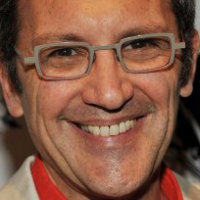 |
Osvaldo Golijov, 1960– . Argentinian composer.
Born of an Eastern European Jewish emigrant family, Golijov has devoted his career to exploring the traditions of his various cultures, in works that cross the normal boundaries between classical, jazz, and folk music of all kinds.
|































